Movies
Interview: Simon Barrett Talks ‘Seance’, ‘I Saw the Devil’, and Winnipeg Winter

Though best known for his work as a screenwriter for such beloved genre hits as You’re Next, The Guest, and segments of the V/H/S franchise, Simon Barrett has now stepped forward as a director with his feature film debut, Seance.
Starring Suki Waterhouse (Assassination Nation), Seance is a giallo-inspired slasher mystery with a supernatural edge. In the film, Camille (Waterhouse) is the new girl at the prestigious Edelvine Academy for Girls. Soon after her arrival, six girls invite her to join them in a late night ritual, calling forth the spirit of a dead former student who reportedly haunts their halls. But before morning, one of the girls is dead, leaving the others wondering what they may have awakened.
I sat down to speak with Barrett about Seance, his transition to directing, the experience of a Winnipeg winter, giallo horror, his impressive vinyl collection, and my own personal curiosities about the announced I Saw the Devil remake.
Kelly McNeely: Obviously you’ve been writing for a while, and I understand that you majored in cinematography and photography in school. You’ve already got a bit of a background with filmmaking and of course, you’ve been involved in the industry for quite some. What was the transition like to working as a feature film director?
Simon Barrett: Like you kind of intuited, I’d always aspired to direct — meaning that I thought that was kind of what my career was going to be at the very beginning of it. Screenwriting was kind of a happy accident for me, a very kind of fortuitous career you know, but it was kind of just like the luck of how I first had success. And I got fairly kind of good at writing for a little bit, but I always was trying to figure out how to direct and direct something.
The main difference is just like, the sense of being responsible for absolutely everything. Because you know, even though some of my early productions with Adam Wingard were kind of quite difficult and extremely low budget films, at least it was ultimately his problem [laughs], when he was directing and editing those films and I was writing and producing them. On Seance I ultimately was the person who had to figure out, like, how we were going to get out of these scenes and the time allotted and you know, if I had 16 shots planned and we now only had time for five.
Before, I’d be having those conversations with Adam, but now I was having those conversations with my cinematographer on the film — Karim Hussain — and it was just like a different thing, so it was a lot more work and a lot more stress than I’m used to. But also it was a lot more fun in a lot of ways, being able to make all those kinds of creative choices, for better or worse.
Kelly McNeely: And Karim Hussein’s cinematography is phenomenal. Everything he does is just incredible, so I was very happy when I saw that he was attached to this project. What was the greatest victory in the making of Seance for you? Like if there was something you achieved or something you were able to do, or something that you locked down that you’re like, “Ah ha!”, was there a victory for you that really stood out?
Simon Barrett: Well, I mean, Marina Stephenson Kerr who plays the Headmistress, Mrs. Landry, in the film, was basically cast at our table read [laughs] because I had to fill that role so last minute, you know, like trying to find someone local in Winnipeg, and she turned out to be so great. And so enjoyable, and to have such a funny vibe with the cast because she herself is quite a profane, funny person. Not at all like the character she plays in the film. And she kind of had all the younger actors pretty much in stitches most of the time.
That’s less a feeling of like, oh, wow, things are finally going great as like, wow, I really dodged like a potentially fatal bullet here [laughs], which tends to be more of how things actually feel in the moment when you’re making a movie. But, you know, casting her, and she was the last major character to be cast in the film. And that was a huge hurdle. And I did remember I was sitting at a table read thinking like, okay, at least we’re somewhat safe now.

Photo courtesy of RLJE Films and Shudder
Kelly McNeely: Seance seems like it’s inspired by gialli, and there are some slasher elements and mystery elements. Can you talk a little bit about your point of — or your points of — inspiration for the film and kind of where this whole movie came from?
Simon Barrett: Yeah, I mean, I would say that I was I was specifically influenced by gialli and I guess I’ve said a few times that you know, the idea of Seance was to create a certain type of film that I feel like exists and is enjoyed by a lot of horror fans in this context. But what hadn’t necessarily been articulated, at least to me, which was this idea of like a cozy slasher, because I tend to find murder mysteries — and particularly slasher horror films — very kind of soothing because they follow a certain template. And within that, kind of the stylistic innovations can be interesting or not. Some of my favorite slasher films are fairly conventional, as well as some of my least favorite So, you know, it’s all in the details with that, and I tend to enjoy films of that nature.
I was looking at a lot of the slashes of the early 1980s. And like you said, really, mainly a lot of gialli, I was really trying to create, you know, a essentially a film that would feel of that time period in a sense, and specifically looking at Phenomena and What Have You Done to Solange, and The House That Screamed — which is a Spanish kind of proto giallo — was a film that I didn’t see until Seance was pretty well underway. And then I was like, oh, well, that’s probably actually the main reference point. I’ve just been actually influenced by things that themselves were influenced by this, prior to seeing the original.
So yeah, it was just stuff like that I watched, like Fulchi’s Aenigma a lot [laughs], you know, movies of that nature were what I was kind of trying to evoke. Which, again, you understand then that you’re kind of making a movie for a somewhat limited audience. That’s not the current kind of vibe in horror, but it was something that I’d always really wanted to try my hand at, specifically.
Kelly McNeely: And I think it’s fantastic to kind of push that vibe in horror and to challenge it a little bit, and to do things that are a little bit different, but also have a very honest and respectful tie back to some of the older themes as well.
Simon Barrett: Hopefully, I mean, you know, when you’re making an homage or a pastiche piece, you know, however you phrase that, it’s a tricky thing, because I kind of would never want to make a film that was like pure stylistic homage, because I actually think that can be kind of creatively easy to just follow kind of a pre-existing template and hit kind of certain nostalgia points for viewers that elicit a instinctive reaction that might resemble entertainment, or some kind of emotional catharsis, but in fact just kind of simulates that and doesn’t really stick with you or have the same effect.
So you know, so I think even with going back to films like The Guest, which was very much inspired by certain films of the 1980s, it wasn’t like Adam tried to shoot that movie to look like one of those films — although he certainly could have if he wanted to — and I think that kind of guided me a little bit with Seance. I knew it was a low budget enough film and a tight enough film shoot that Karim and I had to make a visual choice. But I also felt like if I tried to make it look like Suspiria, I’d end up looking pretty cheap by comparison. So it was about kind of trying to find the language of some of those smaller films and then trying to figure out what’s the modern version that I can do, shooting on an ALEXA Mini.
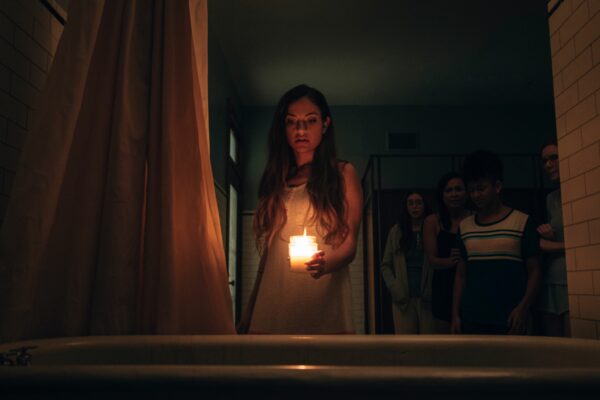
Photo courtesy of RLJE Films and Shudder
Kelly McNeely: And I understand that — as you mentioned — you filmed in Winnipeg. As someone that has experienced Canadian winters quite often, that must have been a challenge. How was Winnipeg? How did it treat you?
Simon Barrett: Yeah, I mean, there’s Canadian winters and then there’s Winnipeg winters, it turns out [laughs]. By the way, I mean we wrapped Seance I think on like December 20, we shot from basically late November to late December and you know, it felt like we were getting out right before it got really scary. The city was just like shutting down, you know, it felt like the sun was only up for a couple hours, but we were never seeing it because we’re making a movie, and you started to get that like sense of, you’d go out into the cold and it’s like your body would start a timer for how long it would take for you to kind of die, you know?
I mean I remember particularly going out one day with Karim because you know, Karim doesn’t drive, and a little after I almost got us into a couple of accidents up there, he kind of made the executive decision that I shouldn’t be driving either. And so we would walk everywhere in sub zero temperatures, and there would just be times when it felt like you were being submerged in ice water just being outside. It was intense.
I would love to go back to Winnipeg though, because I feel like that kind of hardcore environment has led to like just a really interesting kind of crew mentality where I really got along with a lot of the people and I had a nice time. I went to the Winnipeg Cinematheque a few times, I really enjoyed the city and the city’s energy. I would love to go there during the summer, though, specifically, I think next time if I make another film there.
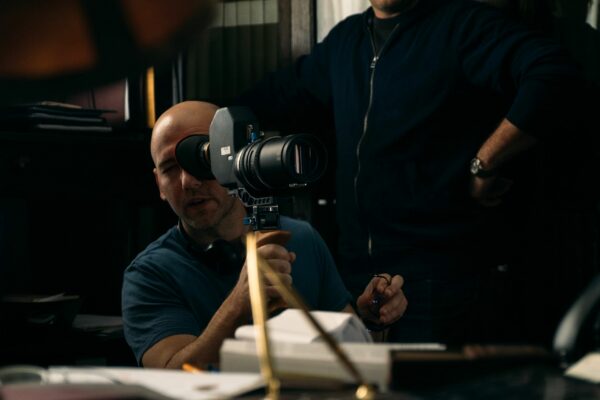
Photo courtesy of
Eric Zachanowich
Kelly McNeely: I imagine you probably get asked about Face/Off 2 a lot, but I want to ask you about I Saw the Devil, because that is my favorite movie of all time. I love that movie so much, and I know that that’s been a project that you have been working on, but it’s kind of been in development for a while. Can you talk at all about it?
Simon Barrett: Yeah, I mean I don’t really know. The truth is, I’m not certain that I know any more about what’s happening with I Saw the Devil than you do at this point. I wrote a script and it was the kind of script that I think would cost enough money, and I mean, we weren’t trying to do like a cheap low budget version of I Saw the Devil is probably the simplest way to put it. So the producers involved in that project really, I think kind of correctly felt like we needed a studio partner. They weren’t interested in financing it themselves, and you know we simply kind of stuck out at that, and now I don’t think it’s a project that really excites Adam and me anymore.
I think as the years have gone by, we’re kind of more like, it’s actually fine that we didn’t do our own take on I Saw the Devil, you know? Like even though it would have been much different than the original, it would have just probably annoyed some people and so on, and you know the original film exists and is kind of magnificent on its own, so you know you’re not necessarily making a movie that people are really clamoring for.
I mean I would even say to a certain extent the response to the Face/Off 2 announcement was so much more enthusiastic than the response to our I Saw the Devil remake announcement had been years prior. Obviously we have more films under our belt now or whatever, and maybe more experience that entices viewers, but to me it kind of felt like a film that was really only getting made on a script level. I Saw the Devil, I mean I did multiple rewrites of it, I was really dedicated to getting that made and I think for a long time Adam kind of considered that like my best script, and we were passionate about it, but you know, the years go by and we had interest from one studio that was interested in doing it as like a PG-13 project, and our producer Keith Calder I think instantly recognized that that was a non starter of a proposal.
So as far as I know, the rights are still kind of controlled by Keith and Adi Shankar and our team of producers on that project. Maybe one of these days they’ll make something of it, but I don’t think Adam will be involved at that point. I’ll just be like, here’s where you mail the checks! Which I don’t even know, I mean, my deal on that. I wrote I Saw the Devil for a low budget minimum. I mean, we were trying to do it, I think kind of cheaply. But ultimately, you just end up basically making less than minimum wage for like, you know, a couple years work on a project and ultimately, I’d rather — if I’m going to be wasting my time and not getting paid to write scripts — I’d rather be writing my own.
Kelly McNeely: Absolutely. And that’s a little comforting, because I feel like it’s such a perfect film. I feel like people are more excited about Face/Off 2 because it’s such an insane and exciting movie.
Simon Barrett: Yeah, I don’t think anyone has really mourned our remake particularly. I think it was more like, when you’re remaking a great modern film, it’s one thing if you’re remaking a film that you can justify that is maybe great, but you can justify an update because technology and society has changed to the point that it’s kind of a new story. But when you’re remaking a great modern film, you’re just remaking because it hasn’t been made in your language yet, I do think there’s a justifiable skepticism towards such a project. You know, what is the reason for this to exist?
In our particular case, we really liked the central premise of I Saw the Devil and thought there was an interesting direction that we could take it in, that kind of would allow an American remake to be an enjoyable companion piece to the original. But at the end of the day, you’re asking fans of the original film to constantly have to explain for the rest of their lives which one they’re talking about, the Korean original or the American remake. It’s why, you know, it’s hard to tell people that, well, my favorite book is The Time Traveler’s Wife, because they identify only with the Eric Bana and Rachel McAdams trailer, you know? So in other words, like, as a filmmaker, I embrace projects like Thundercats, or Face/Off 2 that are based on existing property that has a passionate fan base, with like, total confidence, because I feel like I’m speaking the language of that fan base.
I have no self doubts about my ability to create the right thing. But I also fully understand as a viewer, why everyone else in the world has an extreme amount of doubts about my ability to do that, and a total amount of skepticism, because I do think remakes and sequels can undermine the cultural value of an original project. I do think a bad sequel to You’re Next, for example, might lessen the cultural value of the original film, whatever that is. So you know, I Saw the Devil remake, it’s one of those things where if we’d done a really, really excellent job, probably the best thing anyone would say about our film is that we didn’t screw it up.
And so when you’re facing those odds, maybe sometimes you realize, you know, you’re working on a film that’s fighting against being made. It’s an expense. I Saw the Devil was a financial disaster in every country it was released in, especially Korea, and including the US. So maybe maybe we were mistaken. And maybe we’ll be mistaken about Face/Off 2, you know, time will tell, but it feels different, it feels more like people actually want this one, and they’re not just like trying to intuit how we’re gonna run it.
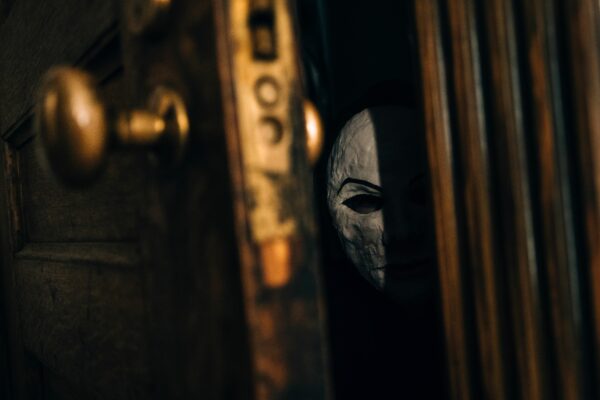
Photo courtesy of RLJE Films and Shudder
Kelly McNeely: If you could access anyone’s music collection, just to steal it — whether you get their Spotify login, you steal their iPod, whatever — if you could have anyone’s music collection, I’m really curious whose you would want to see or steal?
Simon Barrett: Well probably someone like the RZA or Prince Paul or someone really weird like that, who has an approach to collecting records that I don’t even understand, where they’re like searching for beats and samples and stuff. I’ve had the fortune of seeing some DJ acts like The Avalanches and DJ Shadow like at the very beginning of their career when they were still like actually spinning vinyl on multiple turntables and stuff, and witnessing just how the timing and grace of that operation made me really kind of think about film like music collection, in terms of its applicability to film and other arts in just a different way.
I will say though, I’m a music collector myself and I have thousands of records in the two bedroom apartment that I reside in, you know, and I have thousands of records and two turntables so honestly, I would just want to see other people’s record collection so that I could judge it compared to my own [laughs].
Kelly McNeely: And as an avid collector, do you have one record that you’re super proud of?
Simon Barrett: Gosh, that’s such a great question. Um, you know, I have the original 7 inch picture disc of Nick Cave and the Bad Seeds’ I Love You Until the End of the World, which is like this beautiful picture spiral, back when they really weren’t making things like that. It’s from the early 90s and it’s just like, I don’t think they made that many of them, and it is a beloved song to me and a beloved little thing to watch spinning under a needle. And you know, I do have some rare stuff on vinyl, some of my favorite songs, covers by bands, like The Sadies or Split Lip Rayfield that you can only get on vinyl — they’re not on Spotify, they’re not anywhere else, they’re not online, they’re not digital. So I value that stuff a lot, I have early Uncle Tupelo bootlegs, stuff that you really can’t get elsewhere. Um, but you know, when it comes down to it, the first thing that came to my mind was that Nick Cave 7 inch, I think just because I have such an emotional attachment to that particular slab of plastic.
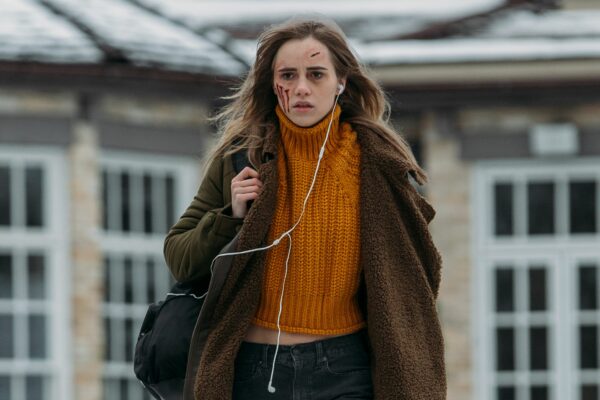
Photo courtesy of RLJE Films and Shudder
Kelly McNeely: What’s the most valuable lesson you’ve learned in your years of experience, working in film?
Simon Barrett: Wow. Um, yeah, I don’t you know, I think that would require some thought. So again, it’s kind of with the most precious record, quick question, I’ll just kind of go with what first came to my mind. Which is — at least when you’re making an independent film on a small budget, which has been my kind of only experience in the industry really — the process of making a movie is essentially like having a vision in your mind that then slowly corrodes over the process of actual filmmaking. And by the end of that, your vision is going to be something else. And it’s just, that’s just the reality of what that is.
Maybe if you have $200 million to make a movie, that thing you end up with is closer to your original vision. But maybe it’s also not, you know, maybe like, because film is a collaborative process, and it’s about what other people bring to the table. And I think that would be the number one thing I’ve learned, although it’s not necessarily a lesson, but it’s absolutely something I learned, particularly from working with my friend Adam over the years, is once you start filming a movie, it’s going to be what it’s going to be. And that might not be what’s necessarily what was in your mind when you were writing the script. And it’s not in your job. As a director, you might feel like, especially if you’re a writer, or a director like myself, especially if you’re a writer/director who has mostly worked as a writer — like myself — you might feel like the right move is to try to push things as much towards your original vision. But sometimes what’s happening is greater than that, and better than that.
And sometimes your job as a director is to kind of under direct, to kind of see what actors are doing and just let them work through their own creative processes. You know, I think Suki Waterhouse and Seance is actually a good example where her take on Camille wasn’t quite what I had in mind, but after watching her work into it, I realized I was getting something more interesting than what had been just on the page, which was more of a kind of Clint Eastwood, you know, hard boiled performance, and she was playing it a lot more disturbed and damaged. And that ultimately did feel like the right choice to me. But I wouldn’t have made that choice necessarily on my own, because I don’t think I had, by that point, the close relationship with the character that she did.
So, you know, that might seem like a lazy answer, you know, the most important lesson I’ve learned is, is to try to do less and be more aware of what other people are doing. But it’s very true, because when you’re directing, you’re really stressed out, and particularly, if you’re me, I tend to be fairly obsessive kind of creatively, I tend to really chew on projects and ideas until I can find some way to see them through to fruition. And so for me, it’s really like, I don’t have the easiest time, maybe trusting other people and ceding control when I should. And that is the process of film. I personally won’t take a film by credits. Because if anything else, I want to kind of always be celebrating that. That’s what movies really are, is kind of listening to other people. And there is no such thing as a bad note, as long as it’s coming from the correct place, as long as it’s not coming from a place of ego, or power agenda, which obviously, these are factors in our business and Hollywood. But you know, but as long as you’re getting the note, and it’s coming from a true place of just trying to make the movie better, then there’s probably some truth in the note, because things always can be made better.
And the hardest thing for me, is to tell my brain to shut up and listen. So that to me is the most valuable thing I’ve learned in my years of experience, the thing that I’ve gained is to no longer just assume that I’m right, just because I wrote the script. But you know, if Suki or Madison Beatty or Marina or Seamus Patterson or someone is doing something a little different, to not just be like, oh, that’s wrong, but really look at it and be like, wait, are they making the movie better in some way that I can ultimately take credit for? [laughs]
Seance lands on Shudder on September 29. In the meantime, you can check out the poster and trailer below!
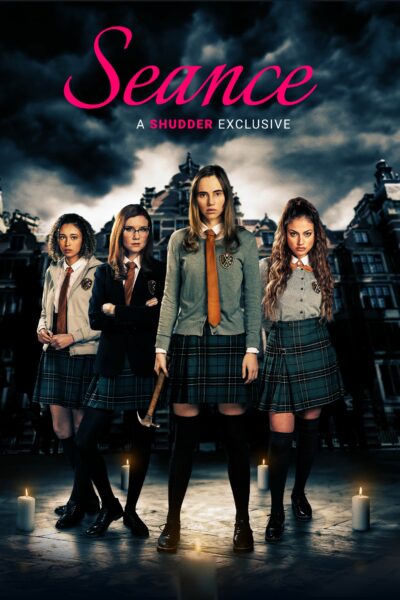
Listen to the 'Eye On Horror Podcast'

Editorial
Yay or Nay: What’s Good and Bad in Horror This Week
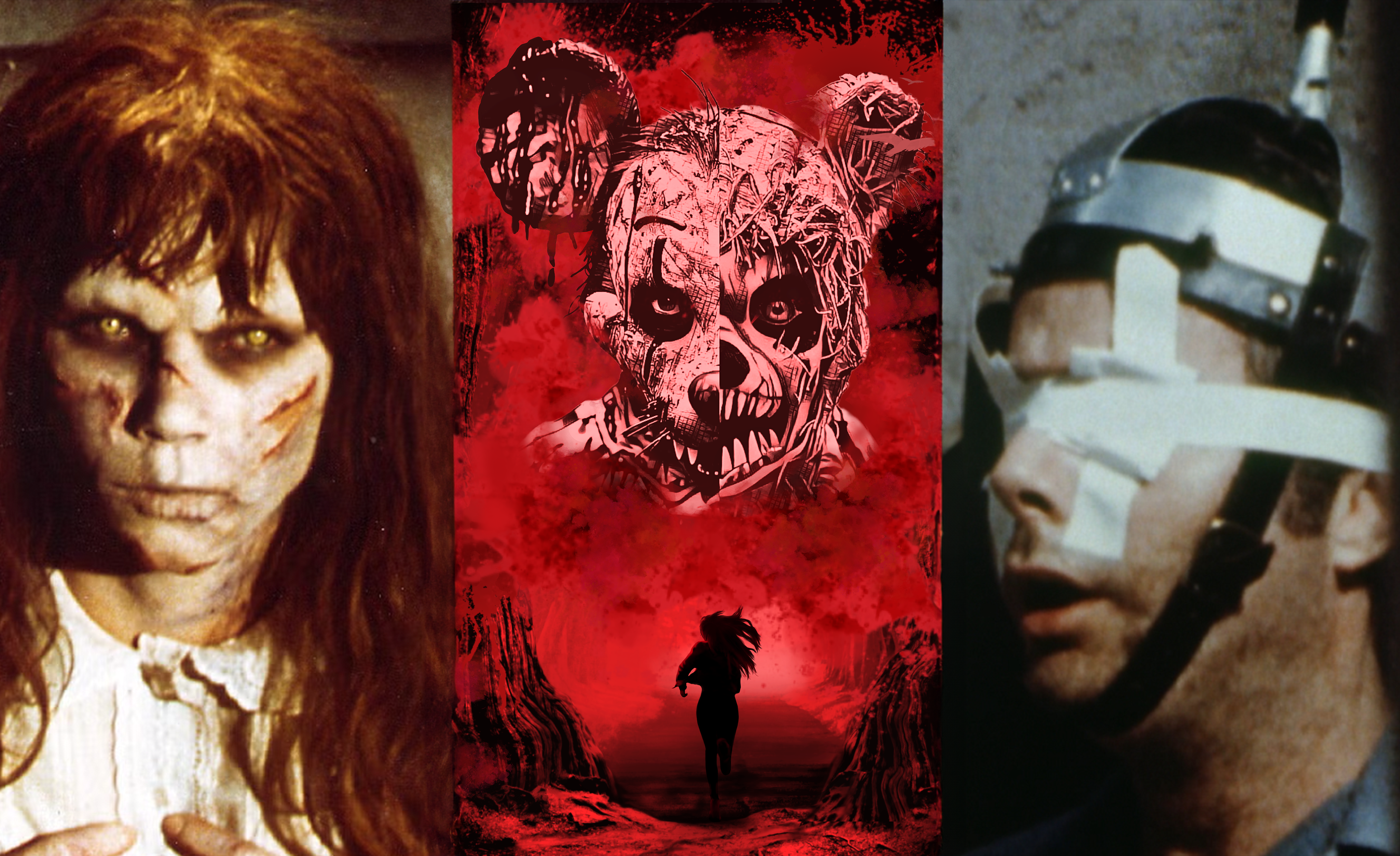
Welcome to Yay or Nay a weekly mini post about what I think is good and bad news in the horror community written in bite-sized chunks.
Yay:
Mike Flanagan talking about directing the next chapter in the Exorcist trilogy. That might mean he saw the last one and realized there were two left and if he does anything well it’s draw out a story.
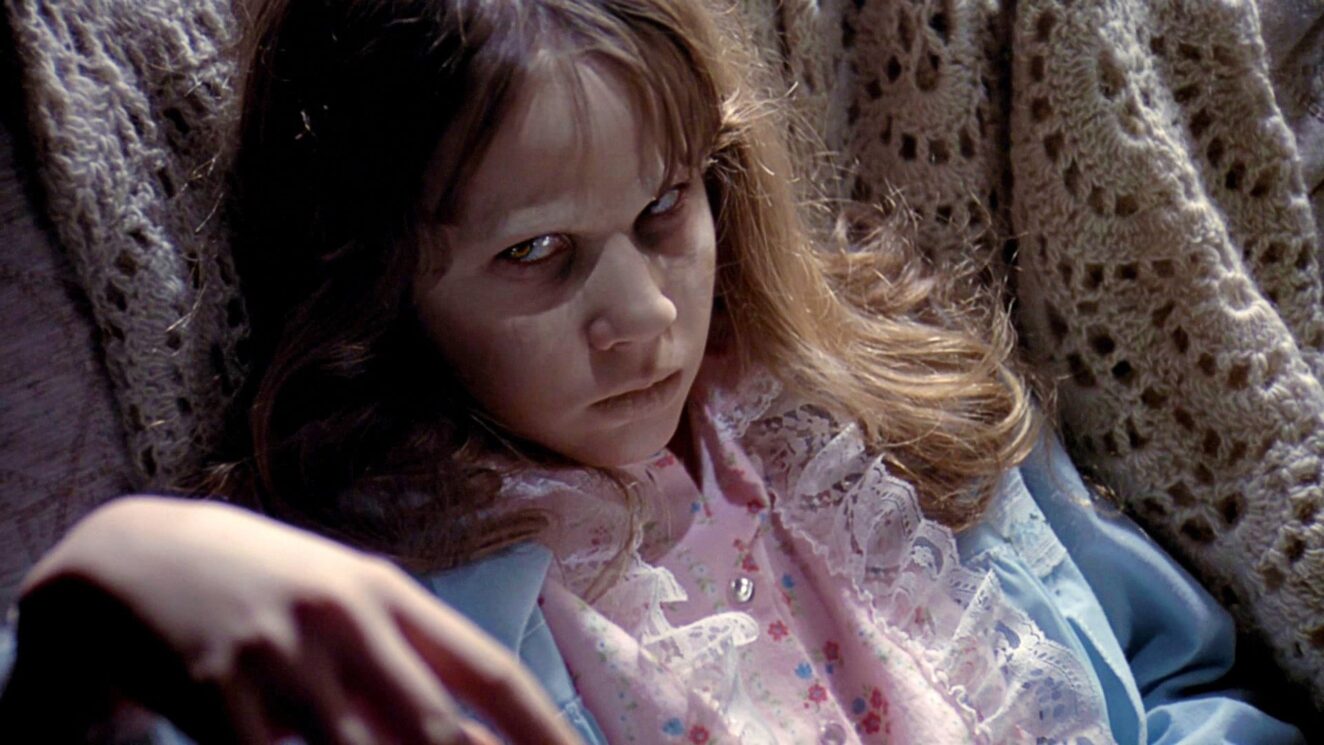
Yay:
To the announcement of a new IP-based film Mickey Vs Winnie. It’s fun to read comical hot takes from people who haven’t even seen the movie yet.
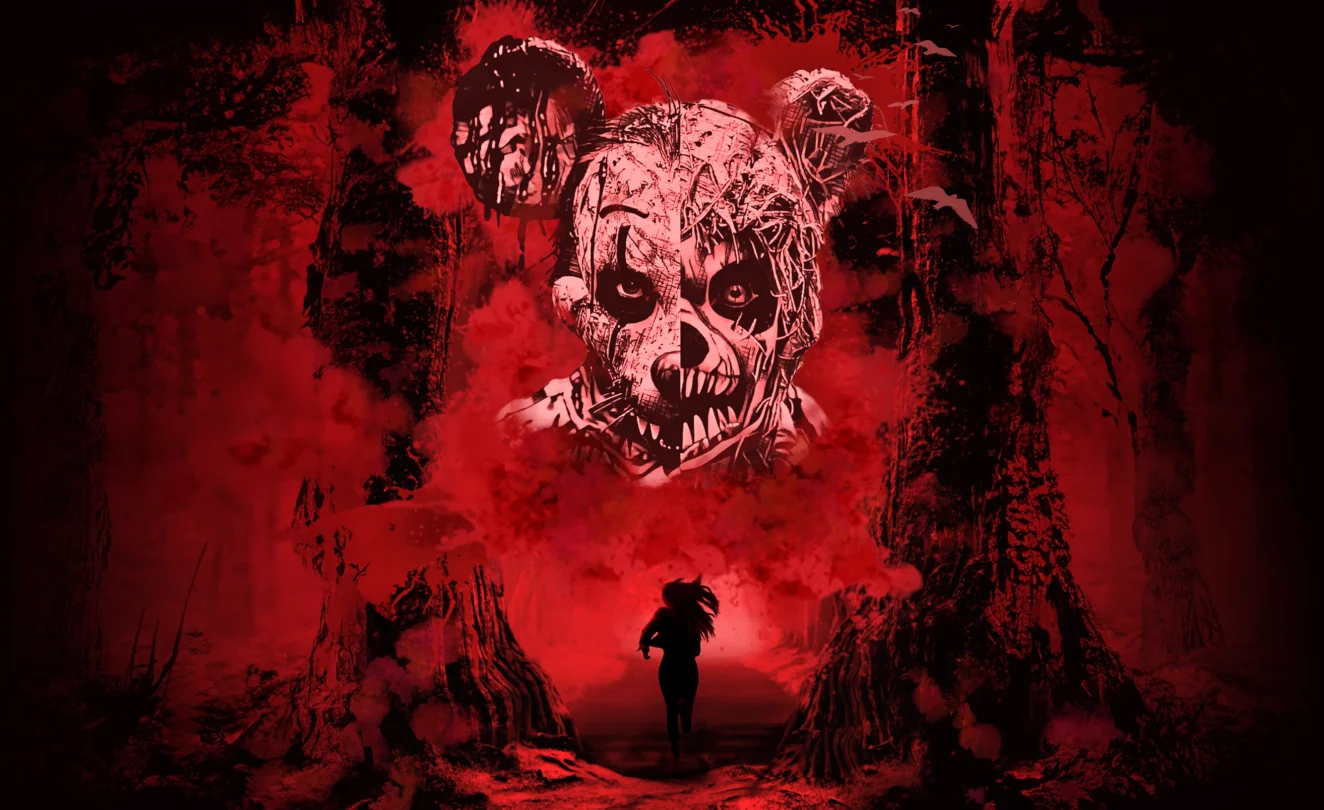
Nay:
The new Faces of Death reboot gets an R rating. It’s not really fair — Gen-Z should get an unrated version like past generations so they can question their mortality the same as the rest of us did.
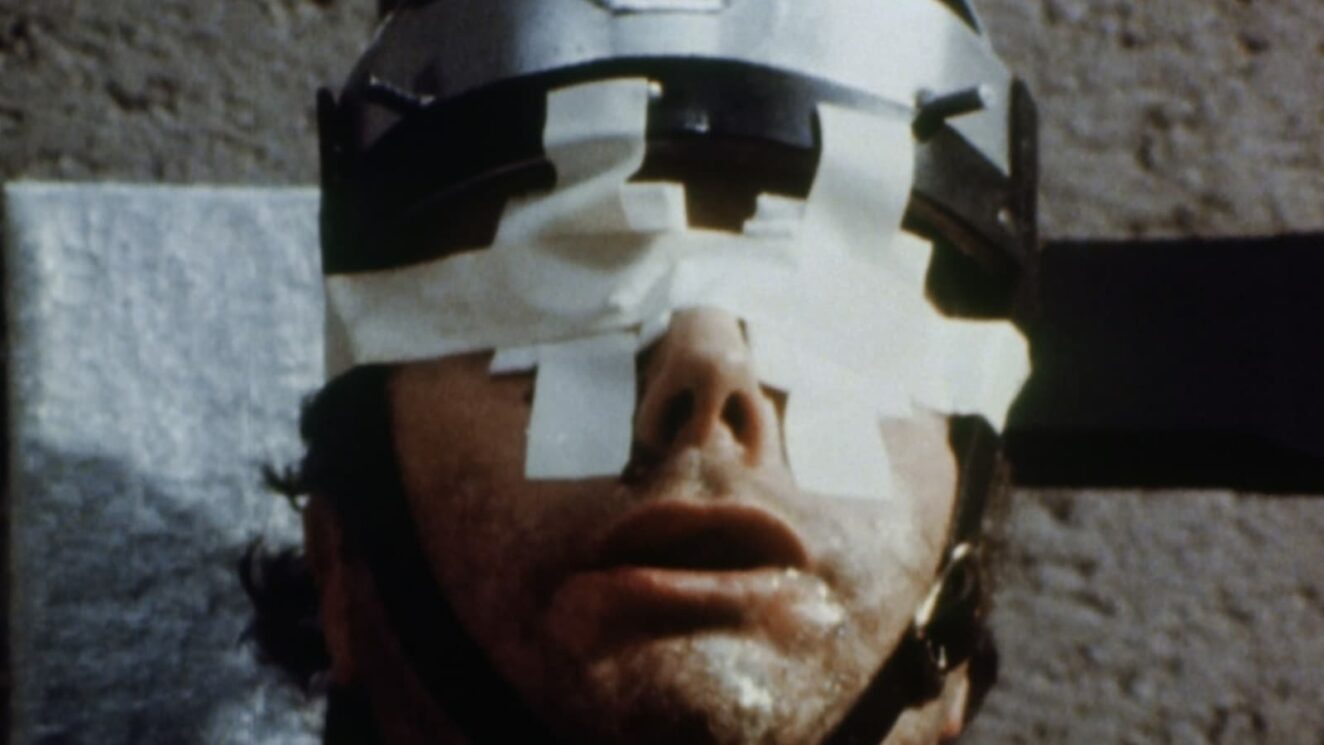
Yay:
Russell Crowe is doing another possession movie. He’s quickly becoming another Nic Cage by saying yes to every script, bringing the magic back to B-movies, and more money into VOD.

Nay:
Putting The Crow back in theaters for its 30th anniversary. Re-releasing classic movies at the cinema to celebrate a milestone is perfectly fine, but doing so when the lead actor in that film was killed on set due to neglect is a cash grab of the worst kind.
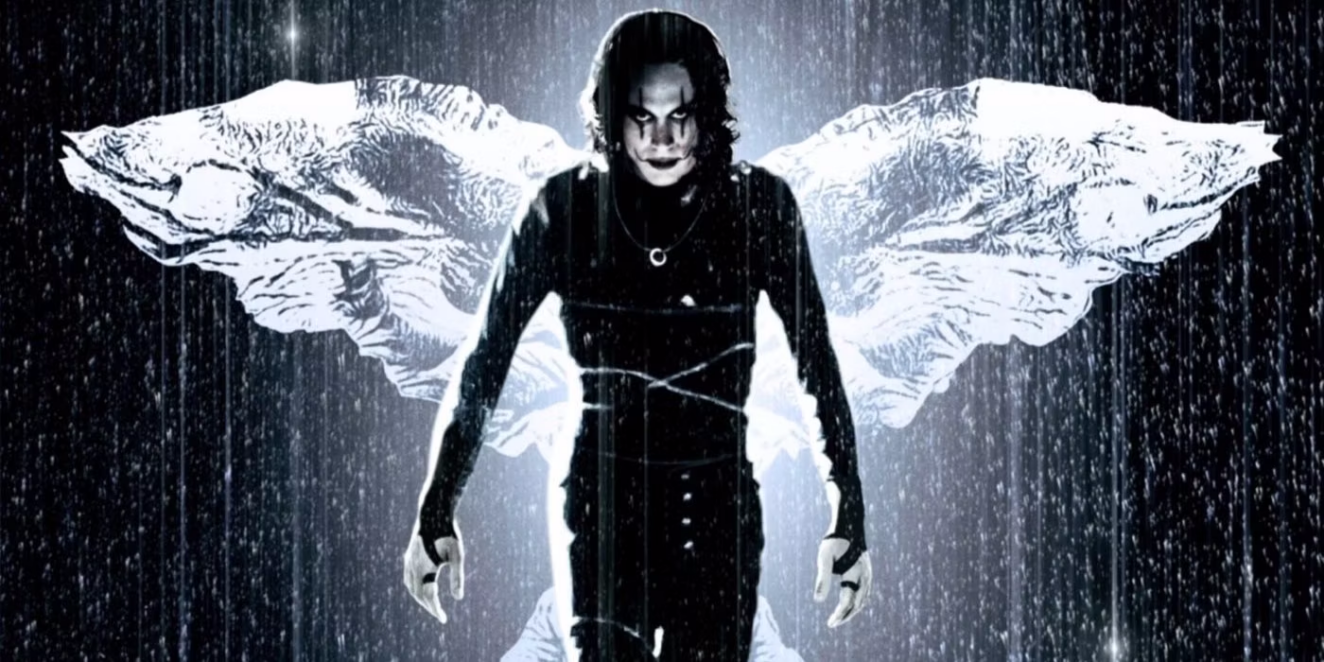
Listen to the 'Eye On Horror Podcast'
Lists
The Top-Searched Free Horror/Action Movies on Tubi This Week
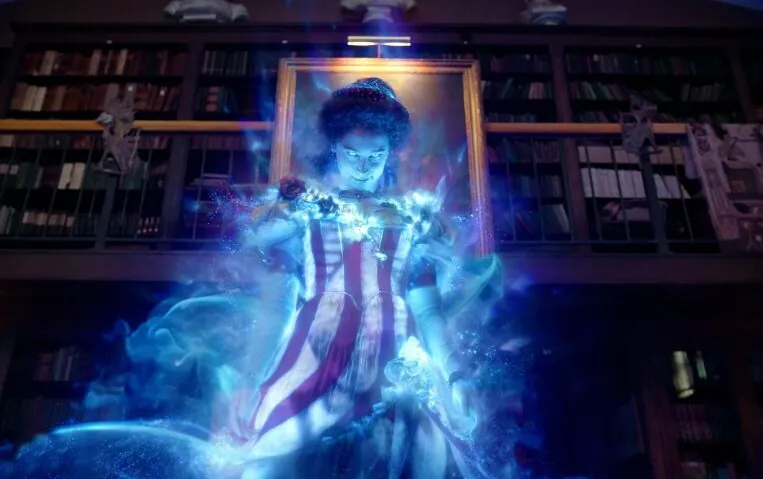
The free streaming service Tubi is a great place to scroll when you’re unsure what to watch. They are not sponsored or affiliated with iHorror. Still, we really appreciate their library because it’s so robust and has many obscure horror movies so rare you can’t find them anywhere in the wild except, if you’re lucky, in a moist cardboard box at a yard sale. Other than Tubi, where else are you going to find Nightwish (1990), Spookies (1986), or The Power (1984)?
We take a look at the most searched horror titles on the platform this week, hopefully, to save you some time in your endeavor to find something free to watch on Tubi.
Interestingly at the top of the list is one of the most polarizing sequels ever made, the female-led Ghostbusters reboot from 2016. Perhaps viewers have seen the latest sequel Frozen Empire and are curious about this franchise anomaly. They will be happy to know it’s not as bad as some think and is genuinely funny in spots.
So take a look at the list below and tell us if you are interested in any of them this weekend.
1. Ghostbusters (2016)
An otherworldly invasion of New York City assembles a pair of proton-packed paranormal enthusiasts, a nuclear engineer and a subway worker for battle.An otherworldly invasion of New York City assembles a pair of proton-packed paranormal enthusiasts, a nuclear engineer and a subway worker for battle.
2. Rampage
When a group of animals becomes vicious after a genetic experiment goes awry, a primatologist must find an antidote to avert a global catastrophe.
3. The Conjuring The Devil Made Me Do It
Paranormal investigators Ed and Lorraine Warren uncover an occult conspiracy as they help a defendant argue that a demon forced him to commit murder.
4. Terrifier 2
After being resurrected by a sinister entity, Art the Clown returns to Miles County, where his next victims, a teenage girl and her brother, await.
5. Don’t Breathe
A group of teens breaks into a blind man’s home, thinking they’ll get away with the perfect crime but get more than they bargained for once inside.
6. The Conjuring 2
In one of their most terrifying paranormal investigations, Lorraine and Ed Warren help a single mother of four in a house plagued by sinister spirits.
7. Child’s Play (1988)
A dying serial killer uses voodoo to transfer his soul into a Chucky doll which winds up in the hands of a boy who may be the doll’s next victim.
8. Jeepers Creepers 2
When their bus breaks down on a deserted road, a team of high school athletes discovers an opponent they cannot defeat and may not survive.
9. Jeepers Creepers
After making a horrific discovery in the basement of an old church, a pair of siblings find themselves the chosen prey of an indestructible force.
Listen to the 'Eye On Horror Podcast'
Movie Reviews
Panic Fest 2024 Review: ‘Haunted Ulster Live’
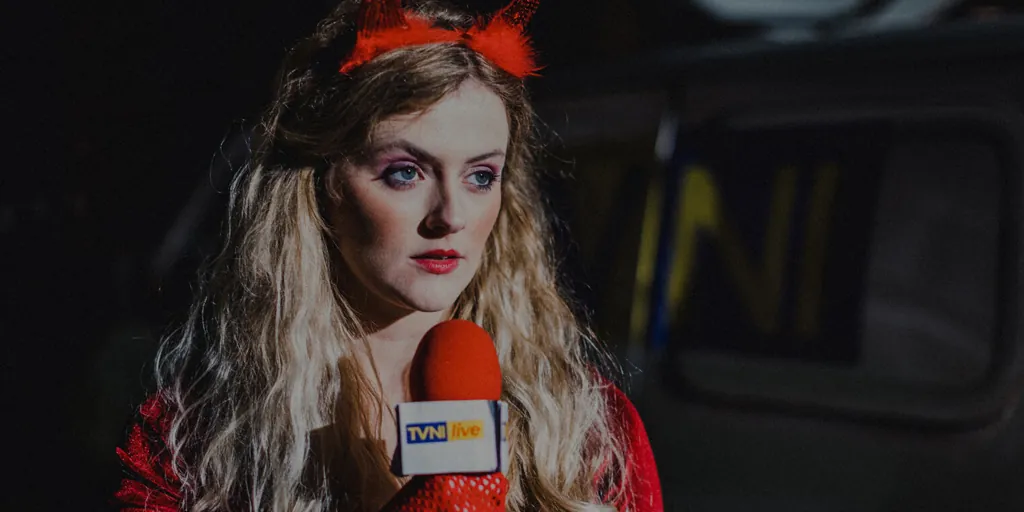
Everything old is new again.
On Halloween 1998, the local news of Northern Ireland decide to do a special live report from an allegedly haunted house in Belfast. Hosted by local personality Gerry Burns (Mark Claney) and popular children’s presenter Michelle Kelly (Aimee Richardson) they intend to look at the supernatural forces disturbing the current family living there. With legends and folklore abound, is there an actual spirit curse in the building or something far more insidious at work?
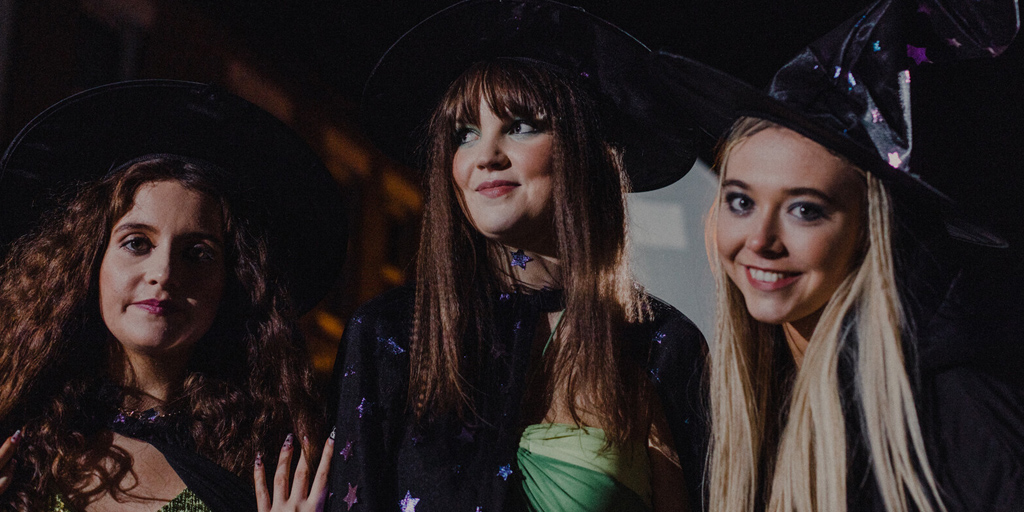
Presented as a series of found footage from a long forgotten broadcast, Haunted Ulster Live follows similar formats and premises as Ghostwatch and The WNUF Halloween Special with a news crew investigating the supernatural for big ratings only to get in over their heads. And while the plot has certainly been done before, director Dominic O’Neill’s 90’s set tale of local access horror manages to stand out on its own ghastly feet. The dynamic between Gerry and Michelle is most prominent, with him being an experienced broadcaster who thinks this production is beneath him and Michelle being fresh blood who is considerably annoyed at being presented as costumed eye candy. This builds as the events within and around the domicile becomes too much to ignore as anything less than the real deal.
The cast of characters is rounded out by the McKillen family who have been dealing with the haunting for some time and how it’s had an effect on them. Experts are brought in to help explain the situation including the paranormal investigator Robert (Dave Fleming) and the psychic Sarah (Antoinette Morelli) who bring their own perspectives and angles to the haunting. A long and colorful history is established about the house, with Robert discussing how it used to be the site of an ancient ceremonial stone, the center of leylines, and how it was possibly possessed by the ghost of a former owner named Mr. Newell. And local legends abound about a nefarious spirit named Blackfoot Jack that would leave trails of dark footprints in his wake. It’s a fun twist having multiple potential explanations for the site’s strange occurrences instead of one end-all be-all source. Especially as the events unfold and the investigators try to discover the truth.
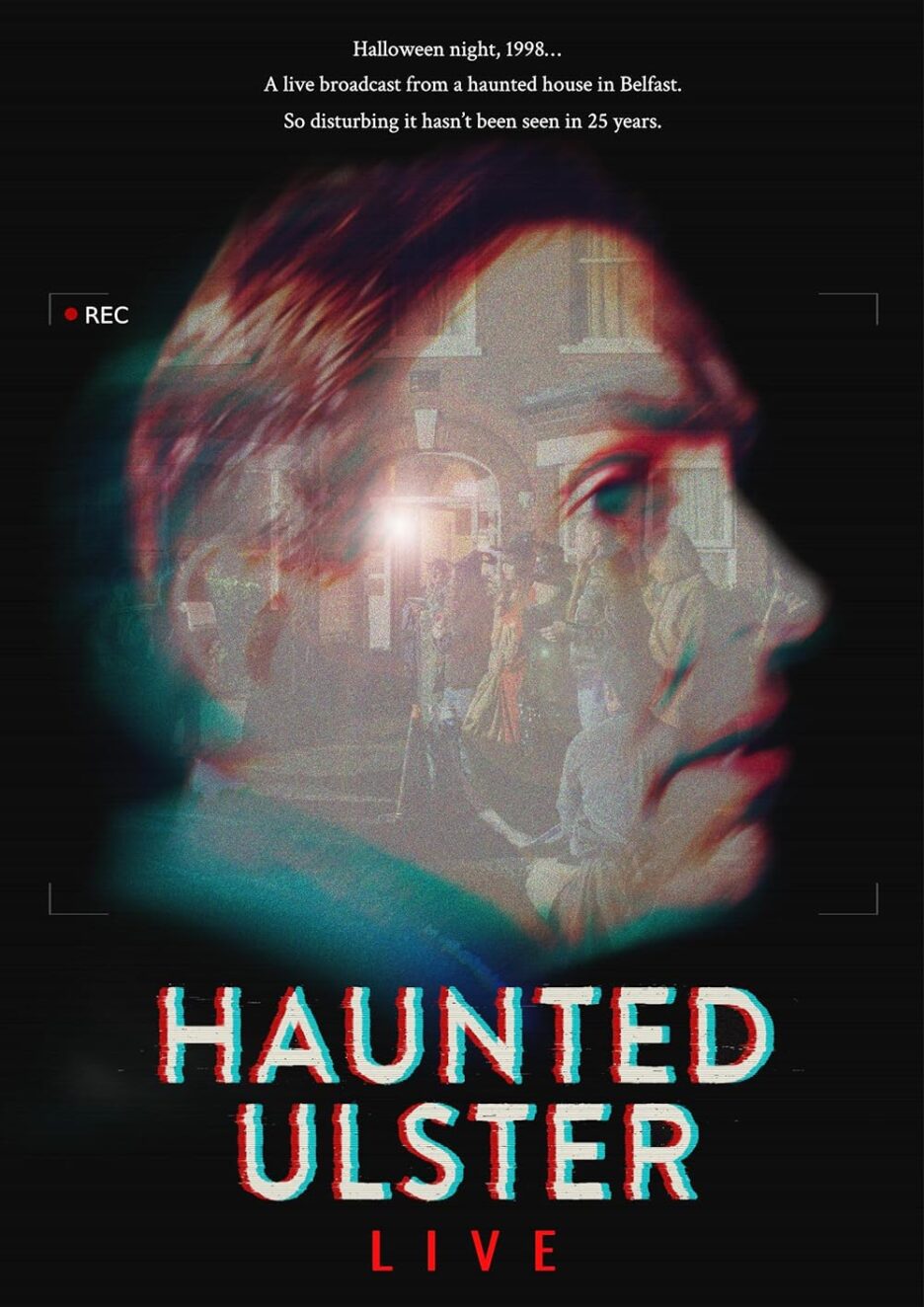
At its 79 minute timelength, and the encompassing broadcast, it’s a bit of a slow burn as the characters and lore is established. Between some news interruptions and behind the scenes footage, the action is mostly focused on Gerry and Michelle and the build up to their actual encounters with forces beyond their comprehension. I will give kudos that it went places I didn’t expect, leading to a surprisingly poignant and spiritually horrifying third act.
So, while Haunted Ulster Live isn’t exactly trendsetting, it definitely follows in the footsteps of similar found footage and broadcast horror films to walk its own path. Making for an entertaining and compact piece of mockumentary. If you’re a fan of the sub-genres, Haunted Ulster Live is well worth a watch.

Listen to the 'Eye On Horror Podcast'
-
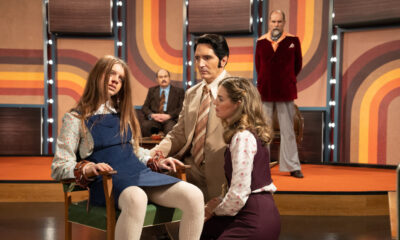
 Movies5 days ago
Movies5 days ago‘Late Night With the Devil’ Brings The Fire to Streaming
-
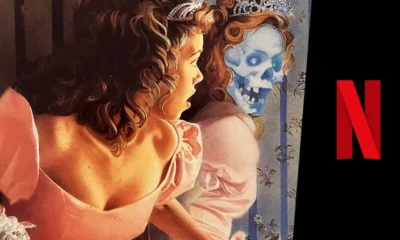
 News4 days ago
News4 days agoNetflix Releases First BTS ‘Fear Street: Prom Queen’ Footage
-

 News3 days ago
News3 days ago“Mickey Vs. Winnie”: Iconic Childhood Characters Collide In A Terrifying Versus Slasher
-
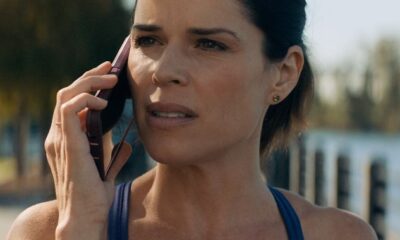
 Movies5 days ago
Movies5 days agoWill ‘Scream VII’ Focus on The Prescott Family, Kids?
-
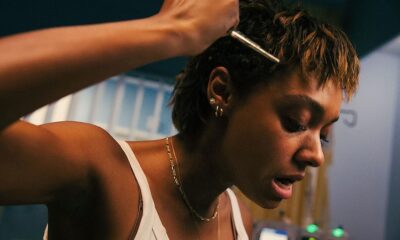
 News4 days ago
News4 days ago‘Talk To Me’ Directors Danny & Michael Philippou Reteam With A24 for ‘Bring Her Back’
-
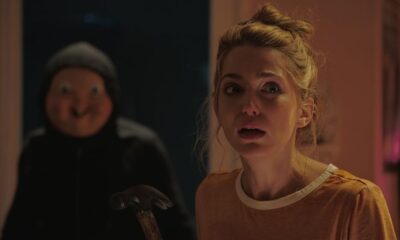
 News5 days ago
News5 days ago‘Happy Death Day 3’ Only Needs Greenlight From Studio
-
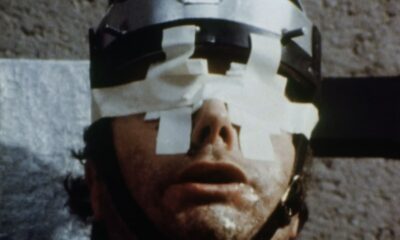
 News2 days ago
News2 days agoNew ‘Faces of Death’ Remake Will Be Rated R For “Strong Bloody Violence and Gore”
-
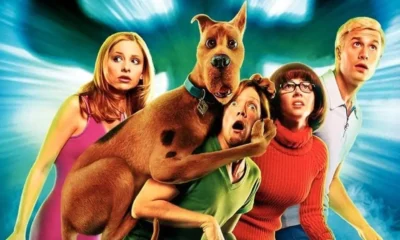
 News4 days ago
News4 days agoLive Action Scooby-Doo Reboot Series In Works at Netflix
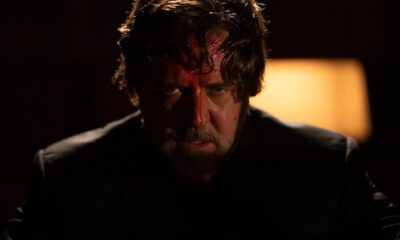























You must be logged in to post a comment Login